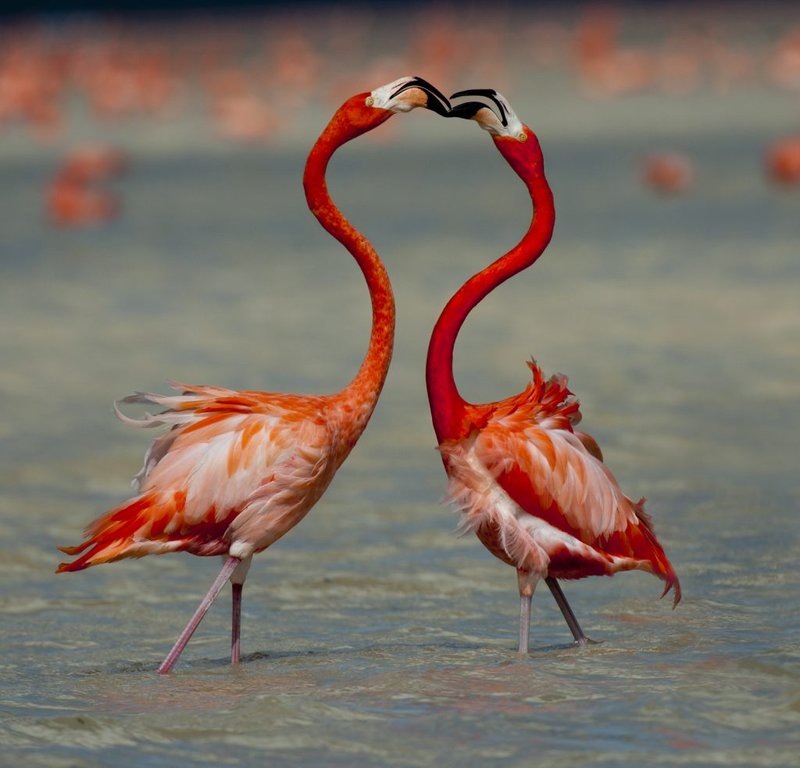
Flamingos, known for their unique feeding habits and social behavior, are more than just a pretty face. They play an important role in their ecosystems, acting as indicators of environmental health. In this blog, we’ll unpack the complexities of flamingo populations across the globe, dive into the threats they face, and explore conservation efforts aimed at ensuring these stunning birds continue to flourish in the wild.
Flamingo Species and Population Overview
There are six species of flamingos found around the world: the Greater Flamingo, Lesser Flamingo, Chilean Flamingo, Andean Flamingo, James’s Flamingo, and the American Flamingo. Each species has unique characteristics, habitats, and distributions, which can affect their conservation status. While some populations thrive, others are struggling to survive.
For example, the Greater Flamingo is found in parts of Africa, Europe, and Asia, with a relatively stable population. In contrast, the Lesser Flamingo, primarily residing in Africa and parts of India, is considered near-threatened due to habitat loss and human impact. Knowing which species are struggling is crucial for conservationists working to protect these beautiful birds.
Understanding Threats to Flamingos
Flamingos face various threats, both natural and human-induced. Here are some of the most significant challenges they encounter:
- Habitat Loss: Wetlands, lagoons, and estuaries are essential for flamingos. Urban development, agriculture, and pollution are destroying these vital habitats.
- Climate Change: Changing weather patterns disrupt the salinity of the water bodies flamingos rely on, impacting their feeding and breeding.
- Human Disturbance: Recreational activities, like boating and fishing, can disturb nesting sites and feeding areas, stressing the birds and leading to abandonment of nests.
- Food Scarcity: These birds primarily feed on algae and small crustaceans. Pollution and changes in water quality can lead to reduced food availability.
Each of these threats compounds the difficulties flamingos face, making it critical to understand their situation and the collective impact on their populations.
Conservation Status of Flamingos
The International Union for Conservation of Nature (IUCN) categorizes species based on their population trends and threats. Here’s a brief look at the conservation status of the six flamingo species:
| Flamingo Species | Conservation Status |
| Greater Flamingo | Least Concern |
| Lesser Flamingo | Near Threatened |
| Chilean Flamingo | Near Threatened |
| American Flamingo | Least Concern |
| Andean Flamingo | Vulnerable |
| James’s Flamingo | Near Threatened |
From this table, you can see that while some flamingo species are doing relatively well, others are precariously close to being endangered. It’s a mixed bag, and the difference often comes down to regional conservation efforts and environmental conditions.
Conservation Efforts and Success Stories
There’s a silver lining when it comes to flamingo conservation. Various organizations and governments are working hard to protect these magnificent birds and their habitats. For instance, the establishment of protected areas, like national parks and reserves, has proven effective.
Additionally, many conservation programs focus on educating local communities about the importance of flamingos and wetlands. When people understand the role these birds play in the ecosystem, they’re more likely to get involved in preservation efforts. For example, in places like the Camargue in France, local efforts have successfully stabilized the Greater Flamingo population.
You might be wondering what you can do to help. Supporting wildlife conservation organizations, spreading awareness about habitat preservation, and choosing eco-friendly products are all ways to contribute. Every little bit counts!
What You Can Do to Help Flamingos
You don’t need to be a scientist or a conservationist to make a difference. Here are some simple steps you can take to support flamingo conservation:
- Educate Yourself and Others: Share information about flamingos and their habitats with friends and family. The more we know, the more we can do.
- Support Conservation Organizations: Consider donating to or volunteering with organizations dedicated to wildlife preservation.
- Be Environmentally Conscious: Reduce, reuse, and recycle. Simple changes in our daily lives can help protect the planet.
- Advocate for Wetland Protection: Support policies and initiatives that protect wetland habitats from pollution and development.
By taking these steps, you can play a part in ensuring that flamingos and their habitats are preserved for future generations.
So, is the flamingo threatened or endangered? The answer is nuanced. While some species are thriving, others are at risk and require our attention. By understanding the challenges they face and supporting conservation efforts, we can all help these iconic birds continue to grace our wetlands and shores.
Let’s cherish the beauty of flamingos and advocate for their protection—after all, a world without these elegant creatures wouldn’t be quite as vibrant.

